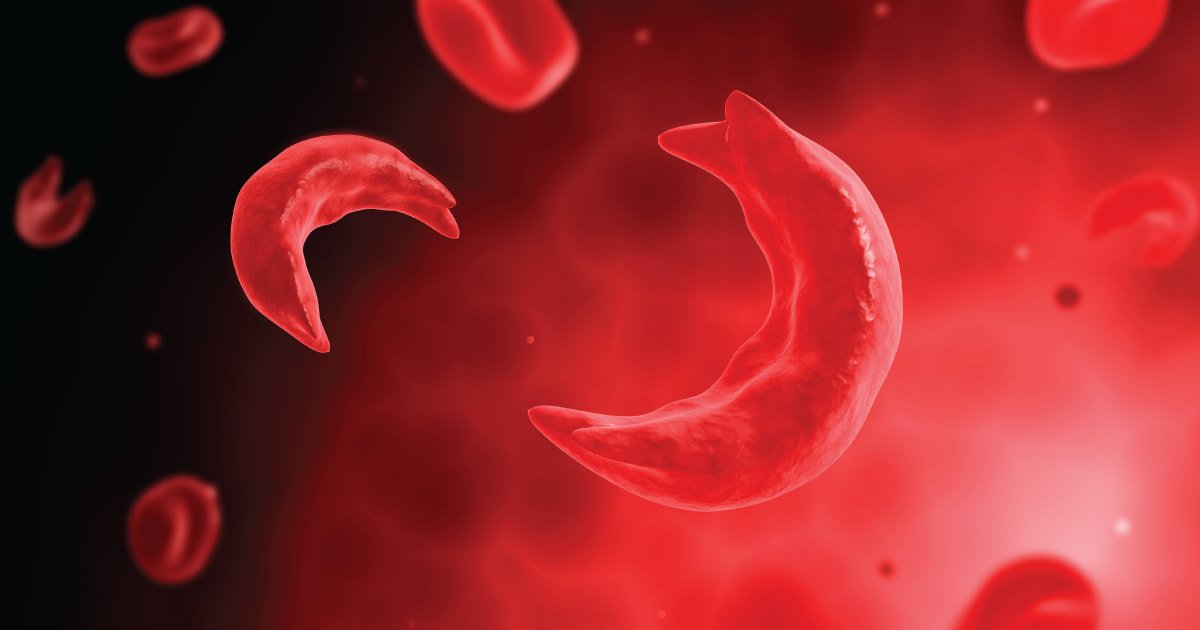
The disorder, known as CIDP (chronic inflammatory demyelinating polyradiculoneuropathy), impairs a person’s ability to move, particularly their arms and legs, as well as their sensory capabilities, causing tingling and numbness.
Although the specific aetiology of CIDP is unknown, experts believe it is an autoimmune disorder in which the body’s defensive systems target healthy tissues.
These healthy tissues, in the case of CIDP, are myelin sheaths, which insulate nerves and allow the nervous system to send impulses more rapidly.
Nerve irritation is also a side effect of the condition.
What Is CIDP?
Chronic inflammatory demyelinating polyradiculoneuropathy (CIDP) is a rare type of autoimmune disorder. In an autoimmune disease, the body attacks its own tissues. In CIDP, the body attacks the myelin sheaths. These are the fatty coverings on the fibers that insulate and protect the nerves.
A chronic variant of acute inflammatory demyelinating polyneuropathy is referred to as (AIDP). Unlike Guillain Barré syndrome (GBS), most CIDP patients are unable to identify a previous viral or infectious ailment. GBS is a subacute condition that develops over 3-4 weeks, plateaus, and then improves over months, with no recurrence. CIDP is defined as a condition that has been present for more than 8 weeks and does not improve unless treatment is continued.
The following are the most common CIDP classifications:
- Progressive: The disease is progressive, meaning it becomes worse over time.
- Recurrent: Symptoms that come and go.
- Monophasic: Disease is defined as a single episode of the disease that lasts 1 to 3 years and does not reoccur.
What Are the Sign and Symptoms of CIDP?
The symptoms of CIPD tend to worsen over time. The following are some of the possible signs of the condition:
- Clumsiness
- Trouble in Swallowing (dysphagia)
- Double Vision
- Foot Dropping
- reflexes are lost
- tingling in the hands and feet
- tingling or soreness in the extremities
- inexplicable exhaustion
Symptoms of the disease usually appear on both sides of the body, for example, in both legs. Some persons may only experience changes in their sensory function, such as tingling and numbness, but not in their walking or movement.
Fatigue, burning, discomfort, and visual problems are some of the other signs and symptoms of CIDP. The neurologic exam will reveal weak muscles that have possibly lost their size and definition (atrophy). Deep tendon reflexes are either absent or severely diminished. Walking will be strange, as will responses to numerous sensory stimuli.
What Causes CIDP?
According to current thought, the body’s immune system, which is supposed to defend us, mistakenly recognizes myelin as alien and destroys it. The peripheral nervous system relies heavily on myelin. It acts like insulation around an electrical wire, wrapping around the nerve axon (the long, wire-like component of a nerve cell).
Nerves run from the spinal cord to the rest of the body, causing muscle contraction and relaying sensory information from skin and joint receptors to the neurological system. Electrical impulses can readily flow down the nerve axon because of the insulation (myelin).
When myelin is damaged or removed, these electrical impulses are slowed or lost, and messages transmitted from the brain are disrupted and may never reach their intended location.
Although the specific causes of CIDP are uncertain, considerable evidence suggests that it is an autoimmune condition. Additionally, autoimmune diseases arise when the body’s natural defenses (antibodies and lymphocytes) against invading infections suddenly start attacking completely healthy tissue.
Autoimmune diseases have no recognized aetiology. Recent research has discovered antibodies directed against peripheral nerve constituents (neurofascin 155 and contactin 1) that produce rare CIDP variations. These findings raise the possibility that other types of CIDP may have a known cause.
CIDP Treatment Cost in India
CIDP Treatment Cost in India starts from USD 2,000. The pricing of the treatment will also vary depending on the type of location and hospital.
CIDP Treatment Cost in Different Parts of India
| Cities | Starting Price |
| Delhi | USD 2,000 |
| Gurgaon | USD 2,000 |
| Noida | USD 2,000 |
| Mumbai | USD 2,100 |
| Hyderabad | USD 2,000 |
| Chennai | USD 2,000 |
| Kolkata | USD 2,000 |
| Bangalore | USD 2,200 |
Please keep in mind that prices of CIDP Treatment Cost in India will vary depending on various factors.
Factors That Can Affect CIDP Treatment Cost in India
The following here are some variables that can affect CIDP Treatment Cost in India:
- Medication costs.
- Duration of treatment.
- Geographical location.
- Hospitalization expenses.
- Government policies and subsidies.
- Medical tourism packages.
- Hospital reputation and infrastructure.
- The expertise and experience of medical professionals.
- The type and frequency of diagnostic procedures.
- The choice of treatment modality.
Even after eliminating the cost of hotel, meals, and transportation, the caliber and grade of medical care and amenities are on par with that of the world’s most renowned healthcare centers. Patients can receive the lowest CIDP Treatment Cost in India from Medsurge India.
How Is the Diagnosis of CIDP Made?
Because CIDP is so unique, it’s generally difficult to identify it correctly, at least at first. Because the diseases are so similar, healthcare providers may mistake its symptoms for those of GBS. If your symptoms persist for more than 8 weeks, your doctor may suspect CIDP.
Your healthcare practitioner may perform additional tests to confirm a diagnosis of CIDP after taking your medical history and performing a physical examination, such as:
- Urine and blood tests.
- To check for myelin degeneration in the peripheral nerves, a nerve conduction test was carried out. However, an alternative name for this test is an electromyogram. In order to test nerve function and response, low electrical currents are applied.
- A procedure where a needle is put into the back is called a lumbar puncture. A tiny needle is placed into your back and a sample of your cerebrospinal fluid (CSF) is withdrawn during this procedure. CSF is the term for the fluid that surrounds your spinal cord. The method aids healthcare providers in detecting high amounts of disease-related proteins.
Other CIDP Diagnosis Is Based on the Patient’s Symptoms:
- Loss of sensation (numbness), aberrant sensation (tingling and discomfort), loss of reflexes, and weakness are some of the symptoms (difficulty walking, foot drops).
- A doctor will begin by gathering information about the patient’s medical history and asking about their symptoms. The absence of reflexes and weakness in the arms and legs are two indications that could indicate CIDP.
Helpful –
Top Neurosurgeons in India –
- Dr. Sandeep Vaishya
- Dr. Rana Patir
- Dr Nigel P Symss
- Dr. Raghunathan N
- Dr. K. Sridhar
- Dr. Paresh K. Doshi
- Dr. Aditya Gupta
- Dr. Bipin Walia
Best Neurosurgery Hospitals in India –
Get Free Cost Estimation
Procedure
How CIDP is Treated?
Treatment for CIDP in India is usually successful. According to certain research, up to 80% of people respond effectively to therapy. Because CIDP is an autoimmune condition, doctors treat it with immune-suppressing medications.
Your medical team personalizes your treatment and keeps a close eye on your development. Immunosuppressive medications, steroids, intravenous immunoglobulin, and plasma exchange (plasmapheresis) to remove immune system proteins from the blood are all used to treat CIDP.
In CIDP, there are three standard or first-line treatments:
- Corticosteroids (Prednisone, Prednisolone): Are similar to anti-inflammatory hormones produced naturally by the body and can be used as an initial treatment. Corticosteroids are commonly used to increase strength, are easy to take by mouth, and are affordable. Long-term use, however, may be limited due to side effects.
- High-dose Intravenous Immune Globulins (IVIG): For the treatment of CIDP, is the only medicine that has received FDA, Canadian, and European approval. IVIG is made up of antibodies that are found naturally in healthy people. IVIG is injected into a vein over a period of many hours. For CIDP sufferers, novel therapies with higher-concentration formulations that can be delivered beneath the skin (subcutaneous) are now available.
- Plasma Exchange (PE), or Plasmapheresis (PLEX): It is a procedure in which some of a patient’s blood is withdrawn and the blood cells are reintroduced without the patient’s blood’s liquid plasma. It could function by eliminating dangerous antibodies from plasma.
There are several so-called third-line treatments, most of which are chemotherapy medications, but they should only be used in certain conditions and by people who have considerable experience with them.
Suggestion
CIDP treatment is a form of art. As is true across medicine, an experienced professional is more likely to have positive outcomes than someone treating their first patient. Most CIDP patients react effectively to therapy that can prevent peripheral nerve damage and contribute to improved function and quality of life, and in some cases, can even cure the illness.
Treatment for CIDP frequently results in an improvement in symptoms followed by a series of relapses.
However, many patients with CIDP require assistive devices such as canes, walkers, or wheelchairs to help them move around in the long run.
The Most Important Frequently Asked Questions
Q: How Long Does It Take to Recover from CIDP?
A: For CIDP to be recognized the cause, you must experience symptoms for at least 8 weeks. The majority of people require medical attention. And the sooner you start, the better your chances of making a full recovery. Symptoms may disappear for a long time before reappearing.
Q: Can You Walk with CIDP?
A: People with CIDP may initially notice that doing the tasks they used to take more effort, but after a few months, their symptoms may escalate to the point where they are unable to perform simple daily activities like climbing stairs, walking without assistance, or lifting objects above.
Q: Does Exercise Help CIDP?
A: Physical activity is essential in the therapy of CIDP. It increases potential strength and decreases muscle atrophy, enhancing function and mobility. Physical activity can help you increase your nerve and muscular strength once your CIDP Diagnosis has been completed and intervention has been identified.
Q: How Do You Reduce Nerve Inflammation?
A: Adding a low-impact activity to a regular routine, such as walking, swimming, or bicycling, can help lessen symptoms and keep the body in shape in the long run. Losing weight can help relieve nerve strain, and increased mobility from a regular workout can help reduce inflammation.
Q: Can CIDP Cause Paralysis?
A: The immune-mediated sensory-motor peripheral neuropathy chronic inflammatory demyelinating polyneuropathy (CIDP) causes substantial impairment. Although severe respiratory muscle paralysis and ventilatory failure are uncommon, they have lately been reported in CIDP patients.
Top Hospitals for CIDP Treatment In India
Top Doctors for Neurology And Neurosurgery
Dr. Haseeb Hassan
Experience: 18+ years of experience
AMRI Hospital, Kolkata (Mukundapur)
Kolkata, India
Dr. Vivek Agarwal
Consultant
Experience: 8 years of experience
Sir HN Reliance Foundation Hospital
Mumbai, India
Dr. Dinesh Rattnani
Senior Consultant , MBBS, MS, MCh
Experience: 12 years of experience
Noida, India
Dr. Supraja Mannemela
Senior Consultant
Experience: 11 years of experience
Medanta – The Medicity, Gurgaon
Gurgaon, India
Dr. Joshy E V
Senior Consultant
Experience: 34 years of experience
Brains Neuro Spine Centre, Bangalore
Bangalore, India
Dr. Ratnadip Bose
Consultant
Experience: 12 years of experience
Medanta – The Medicity, Gurgaon
Gurgaon, India
Dr. Mahesh Narayanan
Consultant
Experience: 18 years of experience
Apollo Children’s Hospital, Chennai
Chennai, India
Dr. Rohit Gupta
Director
Experience: 13 years of experience
Fortis Escorts Hospital, Faridabad
Faridabad, India
Dr. Kishore Kotha
Consultant
Experience: 11 years of experience
Sparsh Hospital (Yeshwanthpur) Bangalore
Bangalore, India
Dr. V. Shankar
Senior Consultant
Experience: 30 years of experience
Sri Ramachandra Medical Centre, Chennai
Chennai, India
Dr. Dhruv Zutshi
Consultant
Experience: 14 years of experience
Fortis Memorial Research Institute, Gurgaon
Gurgaon, India
Dr. Vinayaka.M
Consultant
Experience: 5 years of experience
Manipal Hospital Whitefield Formerly Columbia Asia Bangalore
Bangalore, India
Dr. Ganesh Kini
Senior Consultant
Experience: 30 years of experience
Reliance Hospitals, Navi Mumbai
Mumbai, India
Dr. Somasundaram Aadhimoolam Chinnadurai
Consultant
Experience: 12 years of experience
Apollo Hospitals, Greams Road, Chennai
Chennai, India


































































